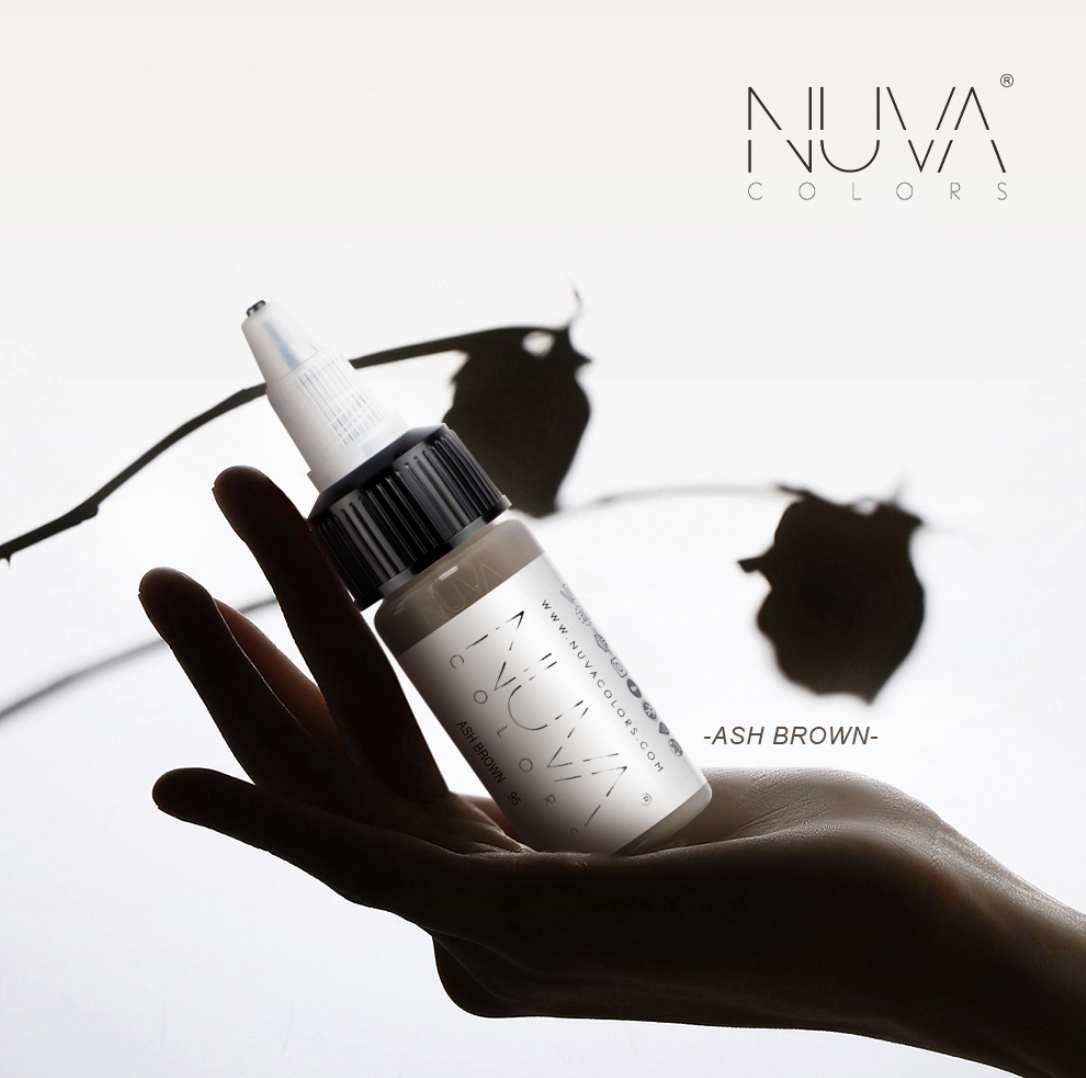
Oct 04 , 2024
Advanced Color Correction Techniques in PMU and SMP
Nuva Colors Presents: Mastering Color Correction for Exceptional Results
Introduction
Color correction in Permanent Makeup (PMU) and Scalp Micropigmentation (SMP) is an advanced skill that sets top artists apart. Whether you're rectifying your work or correcting previous procedures done elsewhere, mastering color correction techniques is essential for client satisfaction and professional growth.
Understanding Color Theory in PMU and SMP
Before diving into correction techniques, a solid grasp of color theory is crucial.
- Primary Colors: Red, Yellow, Blue
- Secondary Colors: Green, Orange, Purple (formed by mixing primary colors)
- Complementary Colors: Colors opposite each other on the color wheel that neutralize each other (e.g., blue and orange)
Common Color Correction Scenarios
-
Eyebrows Turning Blue or Gray
- Cause: Over time, black pigments can fade to blue or gray due to skin chemistry or pigment depth.
-
Lips Appearing Too Dark or Cool
- Cause: Incorrect pigment selection for the client's undertone.
-
Scalp Micropigmentation Fading Unevenly
- Cause: Sun exposure or improper aftercare.
Assessing the Existing Pigment
- Skin Undertone Analysis: Determine if the client's skin is warm, cool, or neutral.
- Pigment Depth Evaluation: Assess how deeply the pigment was implanted.
- Fade Assessment: Identify areas where pigment has faded or changed color.
Selecting the Right Corrective Pigments
- Use pigments specifically designed for correction (e.g., orange modifiers to counteract blue tones).
- Opt for high-quality pigments like those offered by Nuva Colors, known for their stability and longevity.
Step-by-Step Color Correction Techniques
-
Consultation and Patch Test
- Discuss expectations and perform a patch test with the corrective pigment.
-
Preparation
- Cleanse the area thoroughly and apply a topical anesthetic if necessary.
-
Color Neutralization
- Apply the corrective pigment over the unwanted color using a single-needle technique for precision.
-
Layering Techniques
- For stubborn colors, multiple sessions may be required. Allow proper healing time between sessions.
-
Blending
- Blend the corrective pigment seamlessly with the surrounding area to ensure a natural look.
Tips for Preventing Future Color Issues
- Proper Pigment Selection: Always choose pigments that suit the client's skin undertone.
- Quality Products: Use high-quality pigments to reduce the risk of color shifting.
- Aftercare Education: Inform clients about proper aftercare to prolong results.
Case Studies and Examples
-
Case Study 1: Correction of Blue Eyebrows
- Issue: Client's eyebrows turned blue after several years.
- Solution: Applied an orange corrective pigment to neutralize the blue tone, followed by the desired brown shade.
-
Case Study 2: Dark Lips Correction
- Issue: Lips appeared too dark due to the use of a cool-toned pigment.
- Solution: Used a warm, bright pigment to lighten and warm up the lip color.
FAQs on Color Correction
-
Q: How many sessions are needed for color correction?
- A: It varies per individual; some may require 2-3 sessions.
-
Q: Can all unwanted pigments be corrected?
- A: Most can, but severe cases may require pigment removal techniques.
Conclusion
Mastering advanced color correction techniques enhances your skill set and ensures client satisfaction. By understanding color theory, assessing each case carefully, and using high-quality pigments like Nuva Colors, you can achieve remarkable results in PMU and SMP.
Elevate your artistry with Nuva Colors' premium pigments designed for precision and longevity. Visit our website to explore our product range and take your PMU and SMP services to the next level.
References
-
Society of Permanent Cosmetic Professionals (SPCP). (n.d.). Color Theory and Correction in Permanent Cosmetics. Retrieved from https://www.spcp.org
-
American Academy of Micropigmentation (AAM). (n.d.). Best Practices for Color Correction in PMU. Retrieved from https://www.micropigmentation.org
-
Nuva Colors Pigments. (n.d.). Pigment Selection and Correction Guidelines. Available at https://www.nuvacolors.com
-
Field, L. (2019). Understanding Skin Undertones in Permanent Makeup Application. Journal of Cosmetic Dermatology, 18(5), 1234-1240.
-
Grimm, M. (2018). Micropigmentation: Advanced Techniques. PMU Publishing.
-
James, R. (2020). Fundamentals of Scalp Micropigmentation. SMP Education.
-
European Society of Tattoo and Pigment Research (ESTP). (n.d.). Pigment Stability and Color Correction Techniques. Retrieved from http://www.estpresearch.org
-
Milutinovic, M. (2017). The Art of Microblading: An Essential Manual for PMU Artists. Beauty Ink Press.
-
Occupational Safety and Health Administration (OSHA). (n.d.). Safety Practices for Tattooing and Micropigmentation. Retrieved from https://www.osha.gov
-
International Journal of Cosmetic Science. (2021). Advancements in Pigment Technology for PMU and SMP. 43(4), 385-392.
Paul Park
Nuva Colors
Beauty That Lasts






